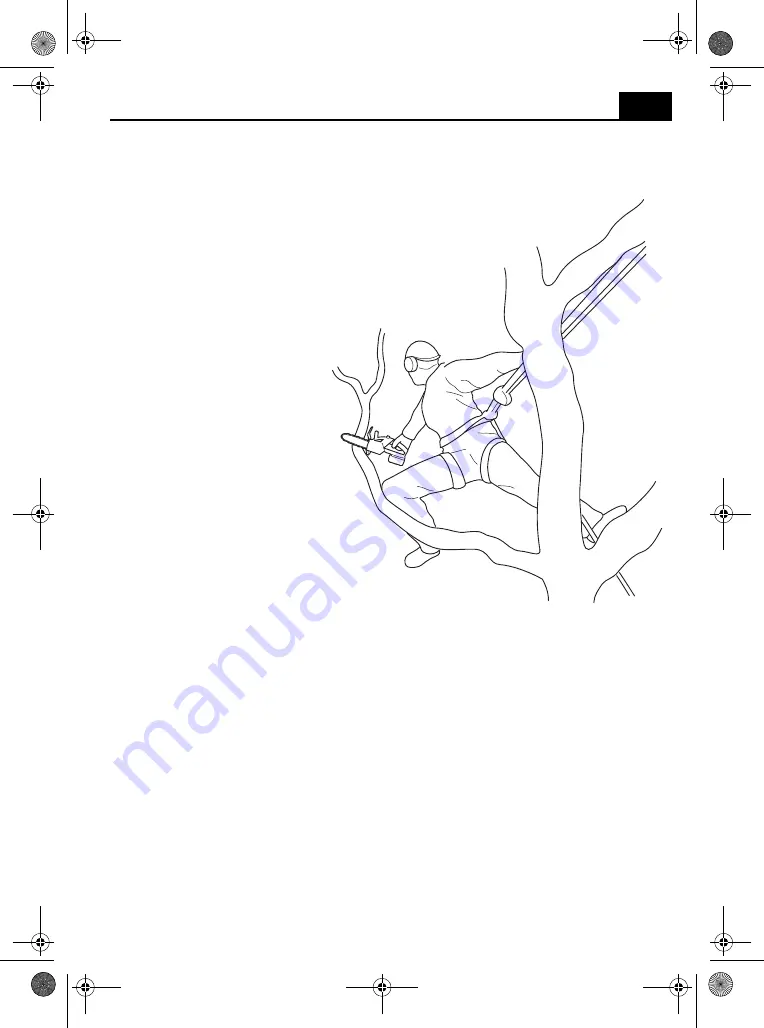
119
Before carrying out difficult sawing work, the user should always ensure that the chain saw has
sufficient fuel.
One-handed operation of the chain saw
Users should not use the chain
saw one-handed for tree mainte-
nance in unstable working posi-
tions or in place of a handsaw for
removing branch tips with a small
diameter.
Chain saws for tree maintenance
should only be used one-handed
if
A. it is not possible for the user to
attain a working position
which will allow two-handed
use,
B. it is necessary to use one hand
to secure the working position,
and
C. the chain saw is used in a fully
stretched stance, at right
angles to and not in line with
the body of the user.
Users should never
– saw with the kick back area at
the tip of the guide rail of the
chain saw,
– hold onto the branch they are
sawing, or
– attempt to catch falling items.
Releasing a jammed chain saw
If the chain saw becomes jammed when cutting, the user should:
A. switch off the chain saw, securely affix it to the inside of the tree (i.e. to the trunk) or to a
separate working rope,
B. pull the chain saw out of the groove while lifting the branch as high as necessary, and
C. if necessary, use a handsaw or second chain saw to release the jammed chain saw by cut-
ting the branch off at least 30 cm away from the jammed chain saw.
Regardless of whether a handsaw or a chain saw is used to release a jammed chain saw, the
cuts to release the chain saw should always be made on the outside (towards the branch tips)
in order to ensure that the chain saw does not fall along with the sawn off parts and make the
situation even more complicated
GB
Kettensaege_Benzin_462226.book Seite 119 Mittwoch, 10. Oktober 2012 2:43 14






























